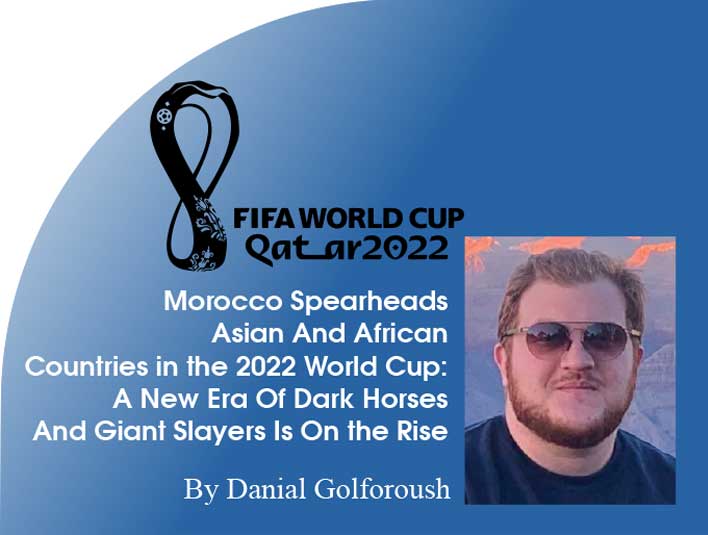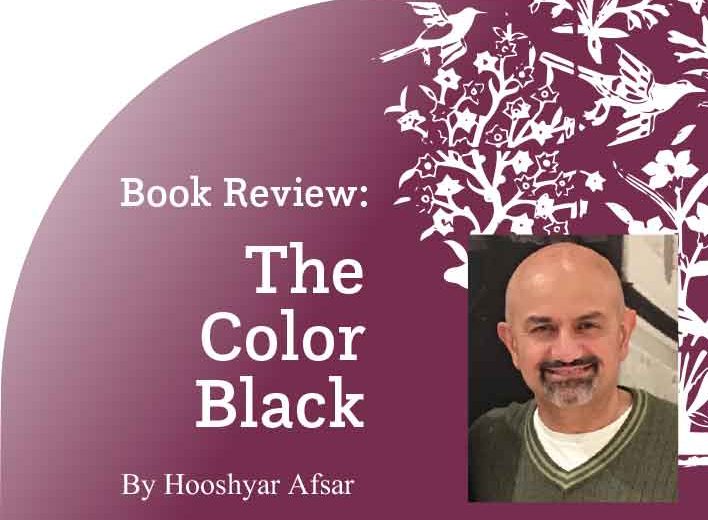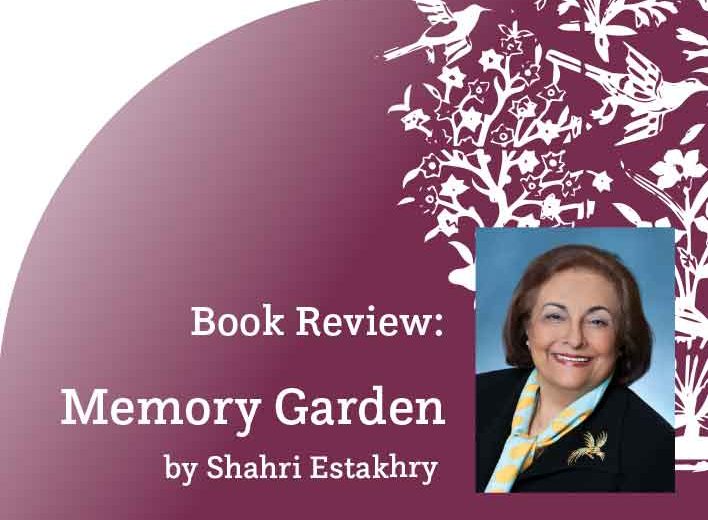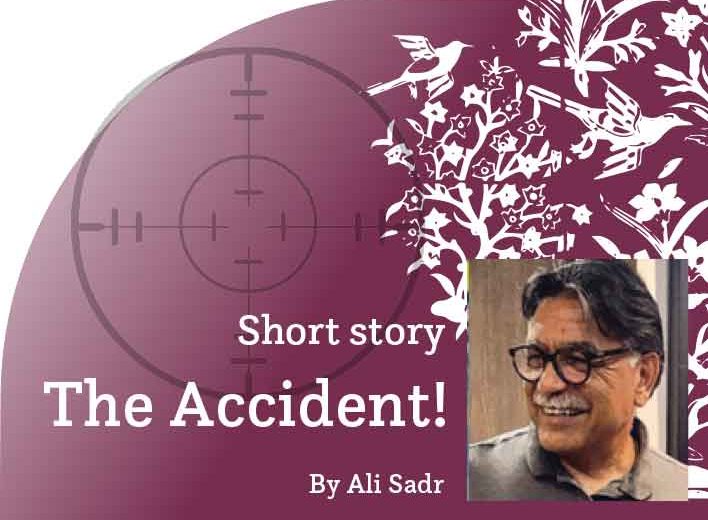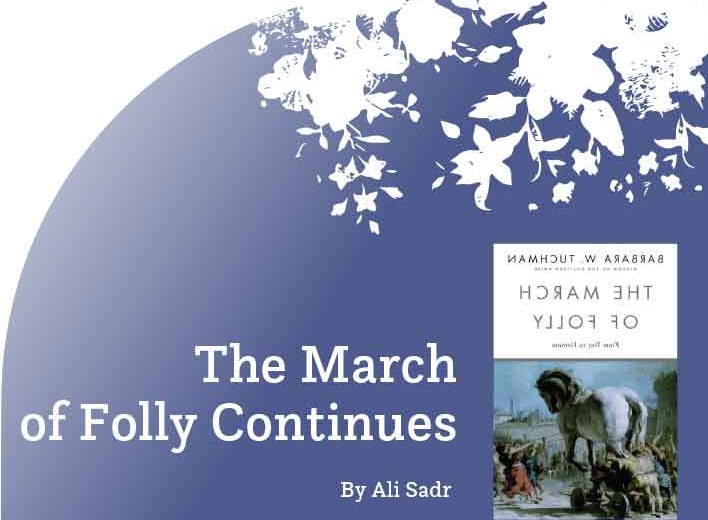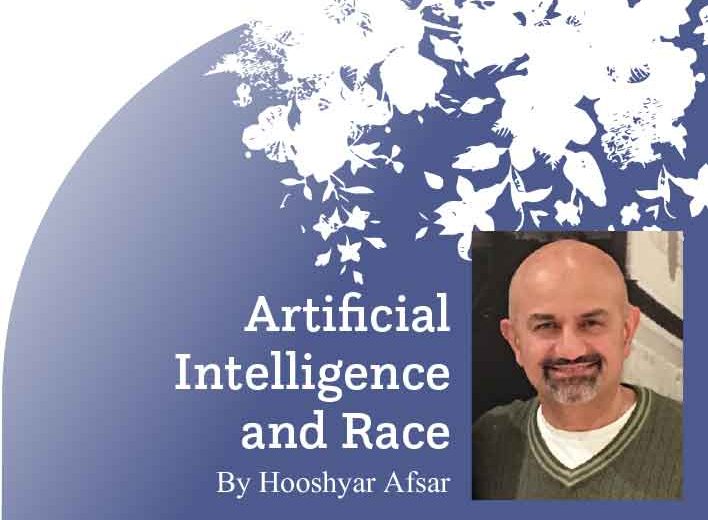Morocco Spearheads Asian And African Countries in the 2022 World Cup: A New Era Of Dark Horses And Giant Slayers Is On the Rise
By Danial Golforoush
The 2022 Qatar FIFA World Cup has been one for the ages! Everything from political and social controversies, a last-minute no alcohol policy, and freedom of speech policing to fake fans, major on-field upsets, and millimeter long margins.
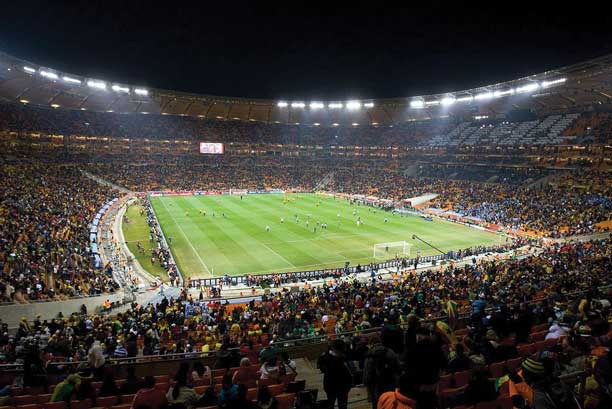
A Quick Note On Derogatory Punditry
Beyond all this, what was the most aggravating was the language and tone constantly used by European and American pundits and commentators, using demeaning words such as “need to evolve,” “backward,” “not a modern woman’s world,” and so on and so forth. This does not mean in any way that Qatari and FIFA’s sins and mistakes are any less or menial! That list is long, hurtful, and a shame for all of humankind; the lack of freedom of speech, lack of humane immigrant worker rights, everchanging takes and policies on LGBTQ+ representation and safety matters, and the list goes on and it reaaaally does go on!
However, the people in broadcasting and punditry should understand and be educated on how to establish and extend the discourse of a topic or region when they are the main source of introduction for many. It has been absolutely demeaning hearing individuals with minimal understanding and exposure to the culture, history, and regional political and social dynamics give strong and mindset-defining opinions and descriptions of the topic. Again, to re-emphasize an earlier point, this does not mean that FIFA and Qatar should not be put under scrutiny for hosting such a global event, but it is fair to say the criticisms of culture in place are rooted in racism and islamophobia.
The Rise of Asian And African Countries
Beyond the derogatory language used when talking about the tournament in general, there is always generally an overarching dismissal of African and Asian teams in these tournaments. GIven that only European and South American teams have won this prize in the past, with South Korea finishing 4th in 2002, Asian and African countries do not have the strongest reputation in the tournament. As a matter of fact, the World Cup trophy has only changed hands between a few countries in the 22 times that it has been held—Brazil, Argentina, Germany, Italy, Spain, Uruguay, France, and England. Hence, there is a set of historical favorites at every tournament (with the likes of Portugal and the Netherlands, two other powerhouses, finding themselves in the mix as well).
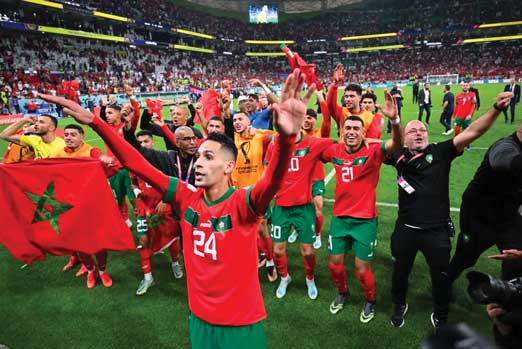
However, this tournament was full of upsets for the general football fans and pundits who only follow European football—African and Asian teams matched or broke records left and right, with every African and Asian team (besides the hosts Qatar) winning at least one time in their group stage games! The African teams had an average tally of 4.8 points and the Asians teams had an average of 3.67 points, some of the best point performances both conferences have seen in the tournament, with Asia’s best point performance since 1998! With Morocco and Senegal proceeding to the round of 16 (matching Algeria and Nigeria’s record in 2014) and with South Korea, Australia, and Japan joining them, this was the tournament’s most diverse knockout stage ever! Even the likes of Iran, Saudi Arabia, Cameroon, Tunisia, and Ghana were true contenders with Saudi Arabia’s surprising 2-1 victory against Messi’s Argentina being the upset and shock of the tournament. Tunisia and Cameroon defeated the second string teams of France and Brazil, respectively, as the first eleven players were being rested. Iran’s victory against Wales meant that they were on the verge of promotion until the last match; much like the rest of the teams!
It was in Japan’s so-called group of death where the rise of a new era of giant slayers and dark horses occurred. Japan defeated both of the favorites of the group in Spain and Germany 2 – 1. Japan’s total world cup squad valuation is put at 154 million Euros by transfermarkt.us, with Germany and Spain each at 855.50 and 877 million Euros, respectively. The performances from all the teams give hope to a rise of a more competitive and balanced World Cup for years to come. It is no longer the case where the teams are led by one or two players who play as starters in European clubs and the entirety of the weight of the performance of the team and their result is on their shoulders—the phenomena that many social media users know as “pass the ball to Ronaldo” tactics, meaning to get the ball to the star player as soon as you can in the right position for them to work their magic. We saw this for more than a decade with Park Ji-sung of South Korea, Shinji Kagawa and Keisuke Honda of Japan, Ali Karimi and Ali Daei of Iran, Didier Drogba of Ivory Coast, Samuel Eto’o of Cameroon, Michael Essien of Ghana, Tim Cahill of Australia, and the list goes on. However, this is no longer the case; with a more competitive and interconnected footballing world, we see the bigger teams either setting up training camps or scouts in regions and places where smaller teams in the past used to fish. The talent pool is finite and the competitiveness in the top levels comes down to the fine details and undiscovered corners with impeccable talents.
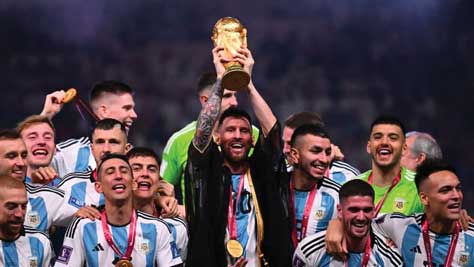
This new approach takes time, so actually a majority of the top players from the African and Asian teams were either born in European countries or were scouted in the youth systems at a very young age. Interestingly enough, certain relations between countries date back to WWII, colonialism, imperialism, and more recent migrant workers who settled in those countries. We see this with both Hakim Ziyech of Chelsea FC and Noussair Mazraoui of Bayern Munich of Morocco, who were both born in the Netherlands, but chose to represent their parents’ country of birth instead. This also goes for Romain Saïss of Beşiktaş and Achraf Hakimi of Paris Saint-Germain as well, born in France and Spain, respectively. However, this is not the case for all players, the likes of Youssef En-Nesyri and Yassine Bounou of Sevilla and Nayef Aguerd of West Ham United are other star players who were raised in Morocco and reached their stardom in Europe—interestingly enough through Spain and France! This continues to be the case for other teams around the world as well, notably French-born players who choose to represent Senegal and Irish-born players who choose to represent England! In other cases, like Takefusa Kubo, players are recruited through trials at a very young age and grow through the systems. Kubo was recruited to Barcelona’s La Masia at the age of 10 and now plays as a starter at Real Sociedad. With more untraditional markets for talent, players choosing to represent their parents’ country, and more interconnected club networks (such as the Red Bull clubs in Germany, the U.S., Austria, and Brazil), each FIFA World Cup and international tournament will become more balanced and competitive.
Morocco’s Record Run
Morocco’s record-shattering run did not end with defeating a tournament favorite Spain in penalties in the round of 16, they also ended another tournament favorite’s run in the quarter finals with a 1 – 0 victory against Portugal. In recent memory, most underdogs depend on their defense and “parking the bus” rather than playing an engaging and pressing game, and that is always because that game play plays into their strengths and heavily relies on speedsters in the attacking end who can score during counterattacks as the “better” team leaves open spaces in the back. That was not the case with Morocco (and the Asian and African teams that proceeded into the last 16). Morocco’s win against Spain wasn’t a lucky victory, but a robust performance in defense and transition to the offensive line by their players. Relying on the likes of Fiorentina’s Amrabat to pull the team together and dictate the pressing and distribution movements from deep in the midfield and for the likes of Hakimi and Mazraoui, two of the best fullbacks present at the tournament, to overlap and stretch the ball playing Spanish. A similar but more defensive performance against Portugal meant that Portugal’s more individual brilliance-dependent team could not break into dangerous positions. This was even more impressive as Morocco’s first choice left-back, Bayern Munich’s Mazraoui, was out injured. It was Sevilla’s Youssef En-Nesyri’s whopping 9’1” jump over both Diogo Costa and Ruben Dias to head the ball in the back of the net from Attiyat-Allah’s cross.
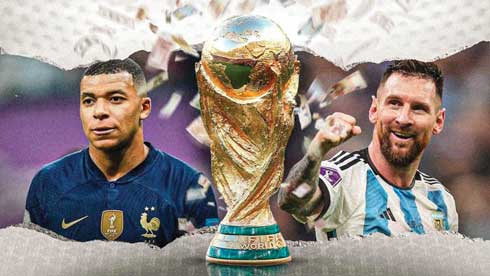
Morocco’s semi-final and third-place games were both competitive performances as well, even though they lost both games. Against France, it was Morocco that dictated the game with 62% possession of the ball and almost 200 more passes than the French, but it was Theo Hernández’ early goal against the run of play, the French’s amazing defending, and a bit of luck that meant the score was 2-0 at the 79th minute with France’s sub Kolo Muani’s first touch. The match ended 2-0, but Morocco was not that far off with a few close shots and a bicycle kick from El Yamiq in the first half that came off the post! In the game against Croatia for the third place spot, both teams were very level, with Morocco seeing 49% of the ball and making only 10 fewer passes. However, it was Croatia’s golden midfield—led by their captain, 2018’s Ballon d’Or winner and 2018 World Cup finalist, Modric—who, with a better use and transition of the ball, found themselves in better attacking positions. It was Oršić who found the back of the net from arguably a mishit cross into the box after both teams had scored a goal each from deadballs.
Morocco ended the tournament with a record-breaking 4th place finish—the first African and Arab country to reach this far into the tournament. It was that extra squad depth that both France and Croatia were able to rely on that Morocco lacked. Besides Morocco’s starting eleven, which includes a number of international stars, the rest of the squad were not on the same wavelength, so the drop in quality could be felt when the star players were subbed out to bring in fresh lungs. This is where we see the transitional moment in many developing or underdog teams from Africa and Asia. The mixture of youth and experience is more balanced than before so there is a better path for players to transition into the team and the ones already there to experience growth. We may not see some of the stars of the team in the next World Cup, but the likes of Hakimi, Mazraoui, En-Nesyri, and the tournament’s break-out star Ounahi will definitely lead Morocco into more continental and global success. As you see all over social media, Morocco may have lost the match, but they have won our hearts!

